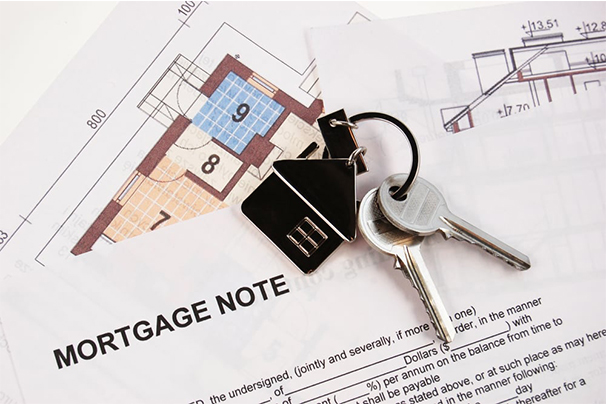When taking out a mortgage loan, there is lots of paperwork you are required to sign, and one of them is a mortgage note. Also known as a promissory note, a mortgage note is a legal agreement stating that you are going to repay your mortgage, how much you are going to pay monthly, and what happens if you are unable to make your payments on time.

It is a very important part of a mortgage transaction that the borrower signs during the mortgage closing. It is very important to know what a mortgage note is before signing it. To give you a better understanding, I will provide all the details about a mortgage in this blog post.
What is a Mortgage Note?
This is a legal document that states the terms of the agreement between the borrower and the lender. It includes your loan amount, repayment terms, down payment, and extra conditions set by the mortgage lender.
The borrower signs the mortgage note at the end of the home-buying process, which states your promise to repay the loan that you borrowed for your mortgage lender. This document also lists how much you will pay every month when you make these payments.
Mortgage notes contain all the details about the agreements that were made between the lender and the borrower. It also displays the terms of your mortgage, which include information about how you are supposed to make repayments for the loan. You must take your time to go through the mortgage note to ensure that everything is fully understood.
How Does It Work?
A mortgage note works by legally binding the lender and the borrower to repay your home loan. By signing the mortgage note, you give the lender the right to repossess your property if you are unable to make payments according to the terms of the contract.
Make sure that you don’t sign anything unless you and the lender agree on the contents of the documents. You can also hire a real estate attorney to guide you through this step. As soon as you understand everything that you are responsible for, which includes monthly payments and the consequences if you are unable to make those payments, you can sign the mortgage note.
What is Included in a Mortgage Note?
Here is what you would expect to see in your mortgage note:
- Prepayment penalties: although they are rare, some mortgages include penalties if you pay off the loan before a specific number of years. Your lender may charge you a penalty. The prepayment penalties can also vary; however, your lender might also charge you 2% of your loan balance.
- Specifications about the type of loan you are taking out, either an adjustable-rate mortgage or a fixed-rate mortgage. In a fixed-rate mortgage, your interest rate will remain the same throughout your loan. In an adjustable-rate mortgage, this rate fluctuates over time based on the performance of the economic index.
- Spelled-out consequences if you are unable to make your monthly payment. Usually, the note will say that your lender can charge you a late fee and also state how large the fee might be if you are unable to make your payments on time.
- Lastly, total amount of down payment and principal amount of your loan. This is the amount that you are borrowing, and you must pay it back.
It is very important to clarify that a mortgage note is not the same as a mortgage. Although both of them are legally binding, a mortgage loan is a type of secured loan that is used to buy a home, while a mortgage note is the document that you sign at closing that states that you promise to repay the loan.
Who Holds the Mortgage Note?
The mortgage note is provided by the mortgage lender. This is the financial institution that originated your loan. Note that the lender that originates your loan might not always be the lender that manages your loan.
In some instances, after the lender originates a mortgage, it sells it off in the secondary mortgage market. Your mortgage being sold does not impact the terms of the mortgage itself or how much you will pay every month. You will keep the same monthly payment, repayment terms, and interest rate.
How To Get a Copy of Mortgage Note
At closing, you will receive a copy of all the paperwork that you signed, which includes your mortgage note. However, if you have lost your copy, you can request a copy from your mortgage servicer. Most companies might also require that you make your request for a copy of the mortgage note in writing.
Then your transaction history will also show where your payments go each month, so you will be able to contact the mortgage servicer. Before signing a mortgage note, ensure all the information in the document is accurate and both you and your lender are clear about the terms and requirements.
If you are not sure what you are signing or have documents, then you can ask your lender. It is also very important to have all your questions answered before signing any documents.
What Happens When a Borrower Defaults on Their Mortgage?
If you are unable to make your mortgage payments, then you will fall into default on your loan. Your lender might charge you late fees for missing payments. It can also start the preforeclosure process by sending you a notice if your payment is 90 days late. After 120 days, the official foreclosure process starts.
Note, if you are unable to make payments, then you should contact your servicer to learn more about your options and if you are unable to avoid your home being taken.



